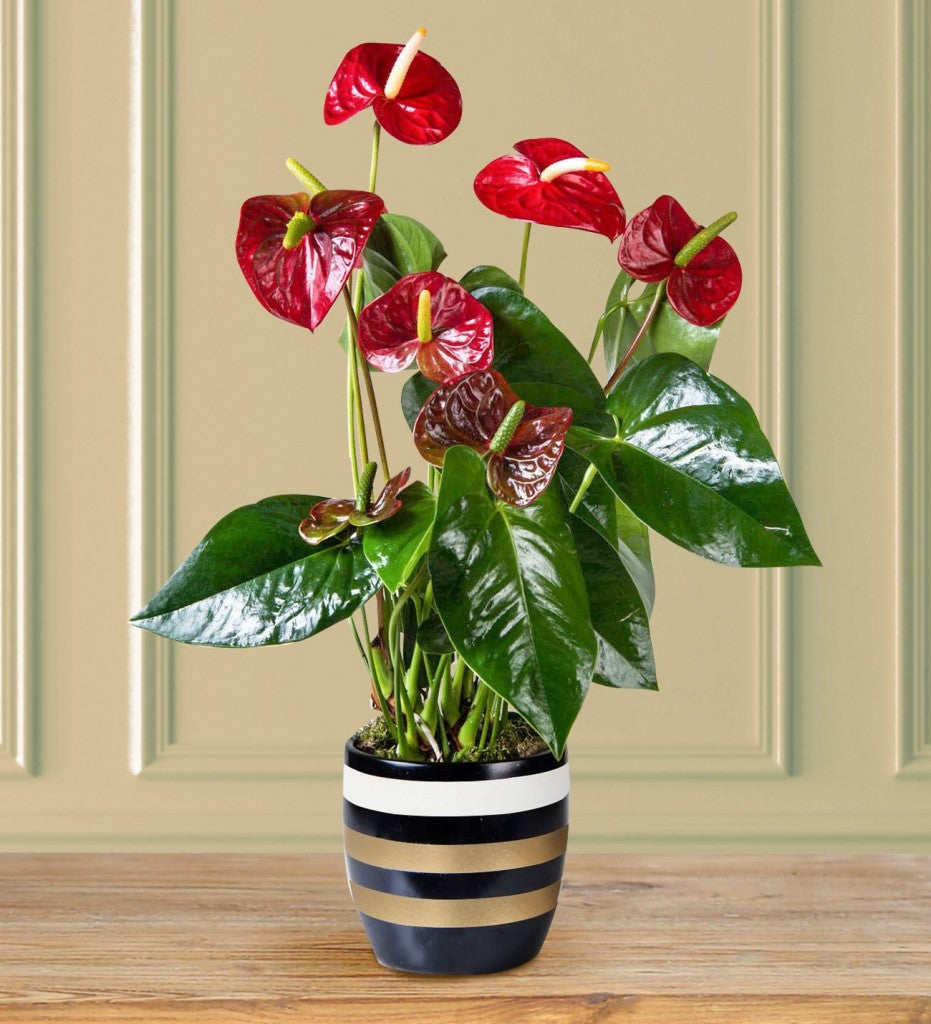Anthurium, commonly known as the tailflower, is a genus of tropical flowering plants belonging to the Araceae family. Native to the Americas, these plants are prized for their striking foliage and vibrant inflorescences. With their unique appearance and ease of care, Anthuriums have become popular houseplants and ornamental additions to gardens.
Botanical Characteristics
Anthurium plants exhibit a wide range of sizes and growth habits. Some species are epiphytes, growing on other plants, while others are terrestrial, rooting in the soil. They are characterized by their leathery leaves, which can vary in shape, size, and color. The most distinctive feature of Anthurium is its inflorescence, which consists of a spadix (a fleshy spike) surrounded by a colorful bract (the spathe). The spathe can be red, pink, white, green, or even bi-colored.
Popular Anthurium Species
Anthurium andreanum: This is perhaps the most well-known Anthurium species, often referred to as the Flamingo Flower. It is known for its large, heart-shaped leaves and vibrant red spathes.
:max_bytes(150000):strip_icc()/grow-anthurium-plants-1902738-11-3d277f29cd8a4ef082f9788f705896bc.jpg)
Caring for Anthurium Plants
Anthuriums are relatively easy to care for, but they do have specific requirements. Here are some tips for growing healthy Anthurium plants:
Light: Anthuriums prefer bright, indirect light. Avoid direct sunlight, which can scorch the leaves.
Propagating Anthurium Plants
Anthuriums can be propagated by division, cuttings, or tissue culture. Division is the easiest method for established plants. Cuttings can be taken from healthy stems or leaves. Tissue culture is a more complex method that requires specialized equipment and techniques.

Anthurium in Home Décor
Anthuriums add a touch of elegance and color to any home. They can be displayed as standalone plants or combined with other tropical plants in a mixed container. The vibrant spathes and unique foliage make them a focal point in any room.
Conclusion
Anthurium plants offer a variety of colors, shapes, and sizes, making them versatile additions to any home or garden. With proper care, these plants can thrive for years to come, providing a constant source of beauty and enjoyment.






:max_bytes(150000):strip_icc()/grow-philodendron-houseplants-1902768-04-8bee1496f67e41c392304329eaea505e.jpg?w=200&resize=200,112&ssl=1)

